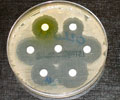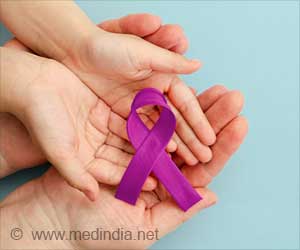- Antibiotic resistance may occur when the bacteria changes in response to the use of medicines.
- New drug PEG-2S has been identified to combat antibiotic-resistance bacteria.
- The drug may inhibit a unique respiratory sodium pump (NQR) which supplies the vital energy that is required to the bacteria’s survival.
The research paper revealed that the bacteria might share a unique respiratory sodium pump (NQR) which would supply the energy vital to the bacteria’s survival.
PEG-2S Drug Effective in Inhibiting NQR Pump
The new drug may inhibit the function of NQR Pump and also the production and growth of Chlamydia trachomatis bacteria.
The drug is highly targeted and may only impact the bacterial cells with NQR pumps and is considered to be safe for the normal healthy cells.
Around 20 different pathogenic bacteria contain NQR; this may be a possibility to avoid multidrug resistance through NQR inhibition which could be a potential breakthrough in antibiotic resistance.
St. Boniface Hospital Executive Director of Research and University of Manitoba, professor of physiology and pathophysiology Dr. Grant Pierce, said, "New drugs are not being approved because they share the same target to which the bacteria are developing resistance. We have not only defined a new and effective target, but we have also designed a drug to attack it without affecting normal cells."
Dr. Pavel Dibrov, lead author, professor, University of Manitoba Faculty of Science, said, "The results from our collaboration are tremendously exciting."
"We are currently designing PEG-2S variations and hope to tailor PEG-based antimicrobials to each specific NQR-containing pathogenic bacterium."
Dr. Ghassan Bkaily and Dr. Pedro D’Orleans-Juste, said, "Antibiotic and antimicrobial resistance to superbugs is a priority research direction in pharmacology. The quality and findings of this study may be instrumental in our efforts to develop new drugs and technologies that effectively address this global health alarm recently raised by the World Health Organization."
Dr. Digvir Jayas, Vice President and Distinguished Professor at the University of Manitoba, also applauded the research collaboration that resulted in the new breakthrough.
"Solving the complex and evolving challenges of antibiotic resistance will put new tools in the hands of caregivers around the globe."
Prof Evelina Tacconelli, Head of the Division of Infectious Diseases at the University of Tubingen and a major contributor to the development of the WHO list, said, "New antibiotics targeting this priority list of pathogens will help to reduce deaths due to resistant infections around the world."
"Waiting any longer will cause further public health problems and dramatically impact on patient care."
Interesting Facts on Antibiotic Resistance:
Antibiotics are drugs that are used to fight against bacterial infections. Antibiotic resistance may occur when the bacteria changes in response to the use of such medicines.
- Misuse of antibiotics is the reason for accelerating antibiotic resistance.
- Antibiotic resistance is one of the biggest threats to global health, food security and development.
- Resistance to antibiotics may result in longer hospital stays, higher medical costs and increased mortality.
- Infections such as pneumonia, tuberculosis and gonorrhea are becoming harder to treat due to resistance.
- Antibiotic resistance may occur to anyone irrespective of any age, in any country.
- Use only antibiotics that are prescribed by a health care professional.
- Prevent infections by regularly washing the hands, preparing hygienic food and avoiding close contact with sick people.
- Ensure that vaccinations are up to date.
- Do not share or use leftover antibiotics.
- Pavel Dibrov et al, Development of a novel rationally designed antibiotic to inhibit a nontraditional bacterial target, Canadian Journal of Physiology and Pharmacology (2017). DOI: 10.1139/cjpp-2016-0505
- Antibiotic resistance - (http://www.who.int/mediacentre/factsheets/antibiotic-resistance/en/)
Source-Medindia













